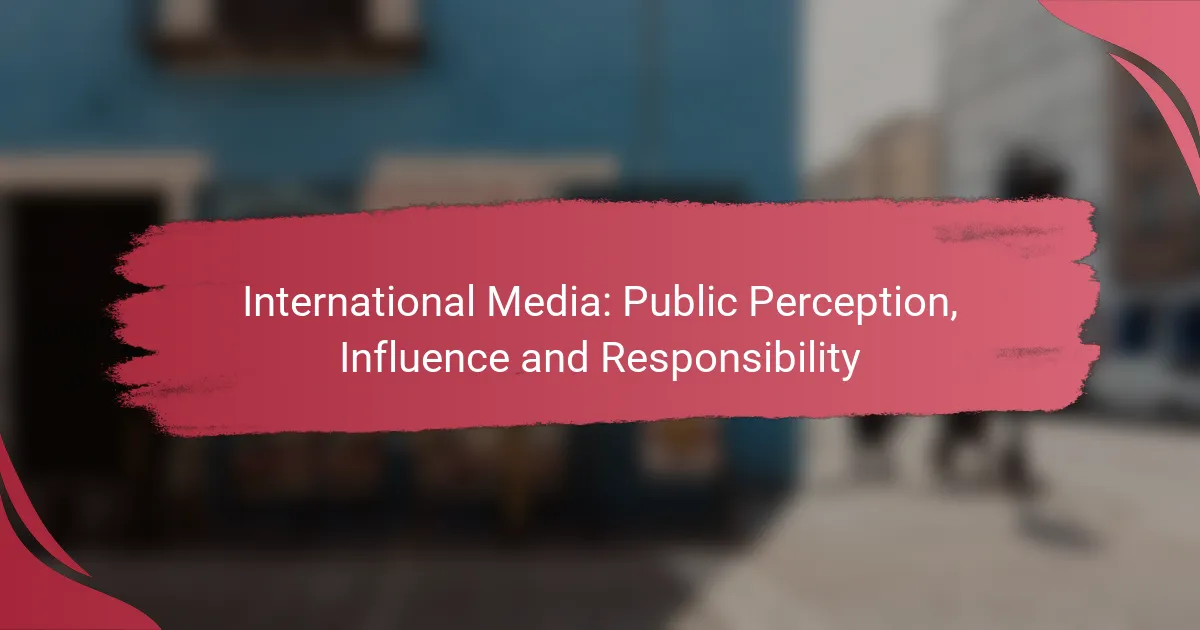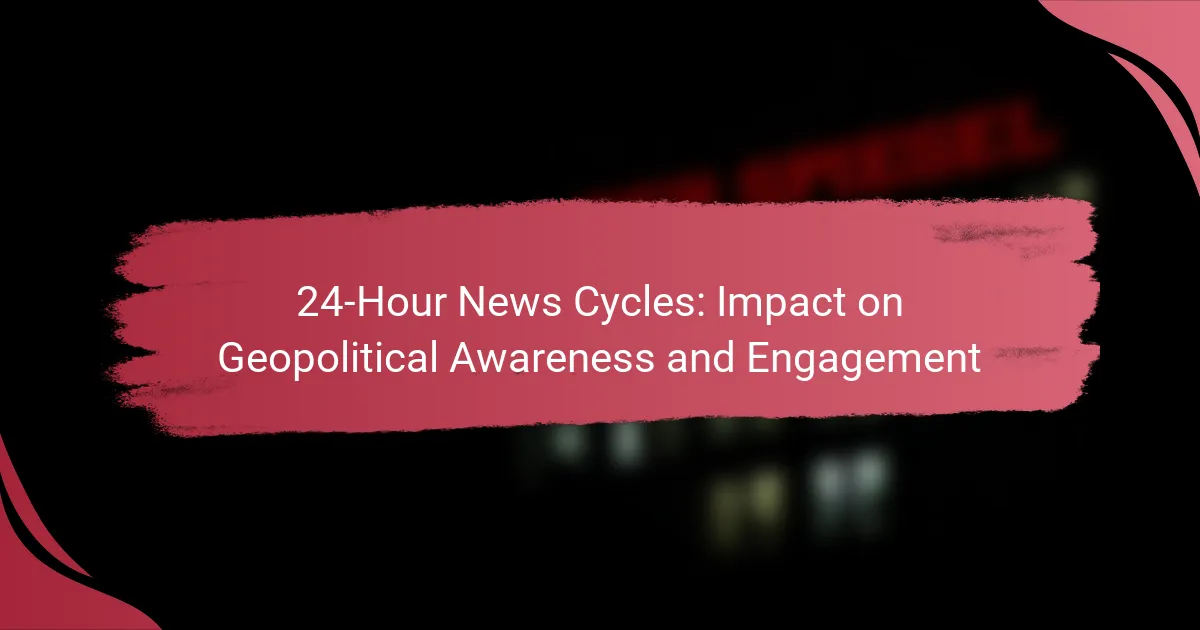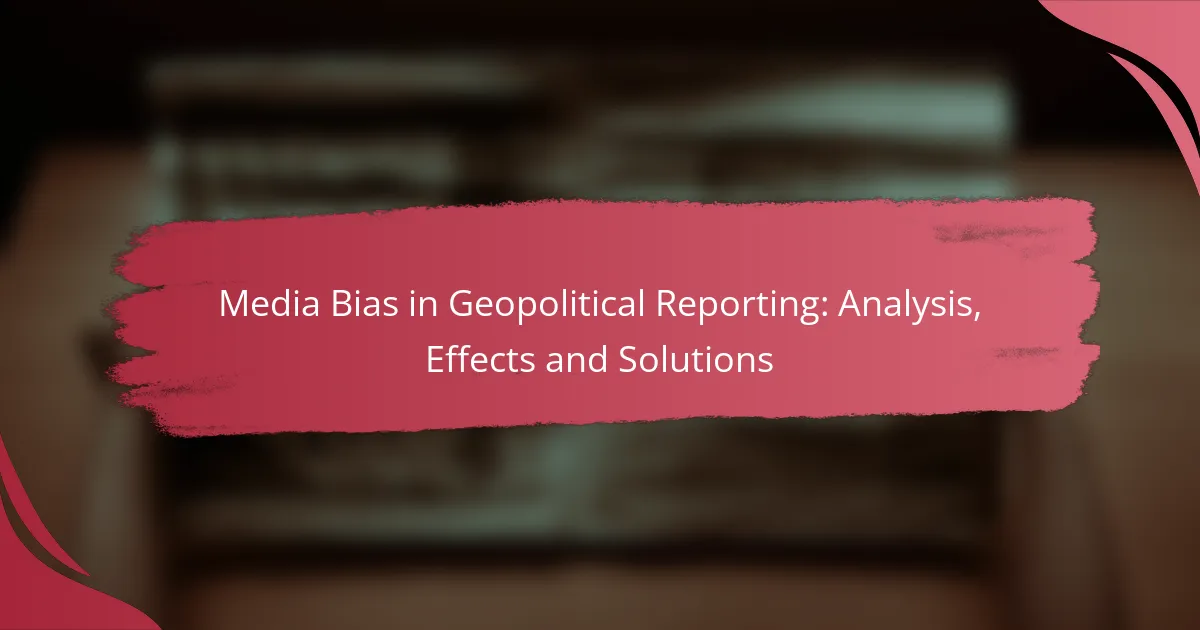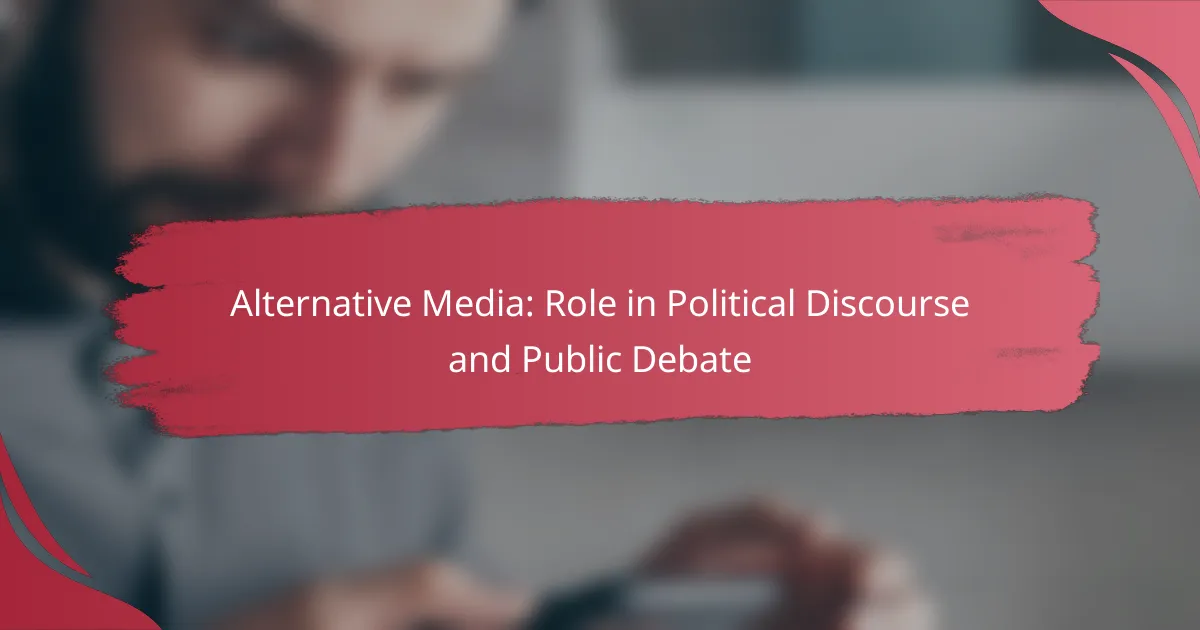International media plays a pivotal role in shaping public perception by framing narratives and influencing opinions on global events. Its responsibility extends beyond mere reporting, as it must ensure accuracy, fairness, and transparency to maintain public trust, which varies significantly across different cultural and political landscapes.
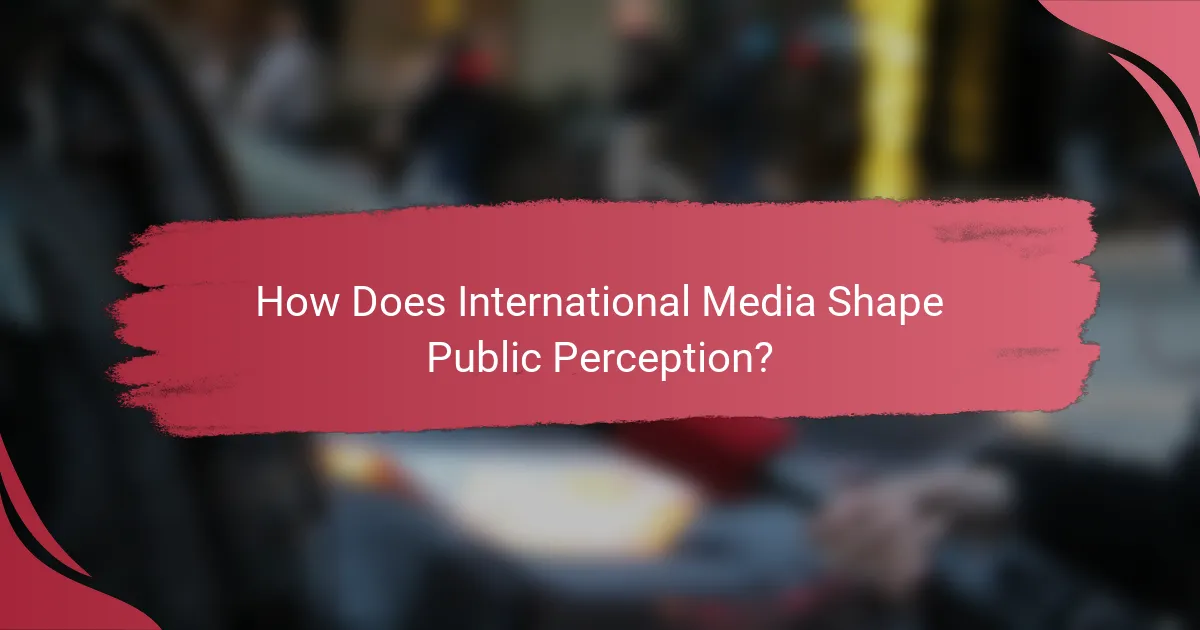
How Does International Media Shape Public Perception?
International media significantly influences public perception by framing narratives, shaping opinions, and providing information on global events. The way news is presented can alter how audiences understand and react to issues, affecting their beliefs and attitudes.
Influence of news coverage
News coverage plays a crucial role in shaping public perception by determining which stories receive attention and how they are reported. For instance, extensive coverage of a crisis can lead to heightened awareness and concern, while minimal reporting may result in public indifference. The choice of language, imagery, and context can further influence audience interpretation.
Media outlets often prioritize certain topics based on their relevance or sensationalism, which can skew public perception. For example, a focus on violent events may create a perception that such incidents are more common than they are, leading to increased fear and anxiety among the public.
Role of social media platforms
Social media platforms amplify the influence of international media by allowing users to share and comment on news stories. This sharing can enhance the reach of specific narratives, often leading to viral trends that shape public discourse. Algorithms on these platforms can prioritize sensational content, further skewing perceptions based on popularity rather than accuracy.
Moreover, social media enables the rapid spread of misinformation, which can distort public understanding of critical issues. Users must be discerning about the sources they engage with to avoid being misled by unreliable information.
Impact of cultural narratives
Cultural narratives significantly affect how international media shapes public perception. Different cultures interpret news through their unique lenses, influenced by historical context, values, and societal norms. This can lead to varying reactions to the same event, depending on cultural background.
For example, coverage of international conflicts may be perceived differently in Western countries compared to those in the Middle East, where historical grievances shape public sentiment. Understanding these cultural narratives is essential for media consumers to grasp the full context of international news.
Case studies: CNN and BBC
Both CNN and BBC serve as prominent examples of how international media shapes public perception. CNN often emphasizes breaking news and live reporting, which can create a sense of urgency and immediacy. This approach can influence viewers’ perceptions of events as they unfold, often prioritizing dramatic developments.
In contrast, the BBC tends to focus on in-depth analysis and context, providing a more comprehensive view of global issues. This difference in approach can lead to varying public perceptions, with CNN’s style potentially fostering a more reactive audience compared to the BBC’s more reflective view.
Global vs. local media perspectives
Global media outlets often provide a broader perspective on international events, while local media may focus on regional implications and community impacts. This distinction can shape public perception significantly, as local media often resonates more with audiences due to its relevance to their daily lives.
For instance, a global media report on climate change may highlight international agreements, while local media might focus on how these changes affect local agriculture or weather patterns. Understanding these different perspectives is vital for audiences to form a well-rounded view of global issues.
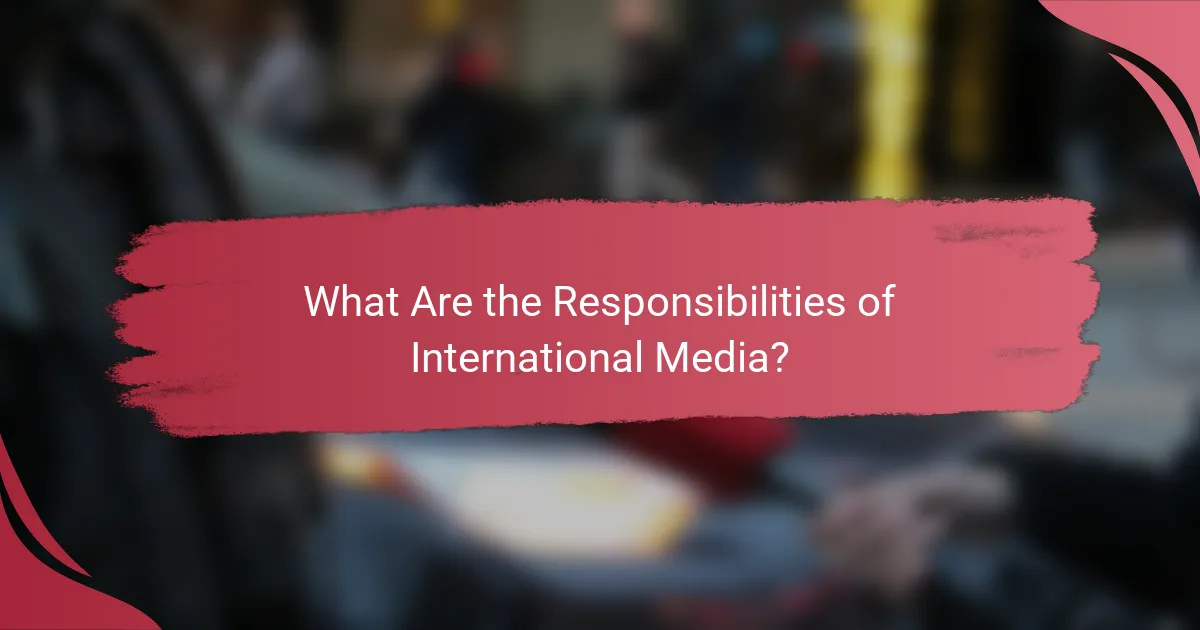
What Are the Responsibilities of International Media?
International media have a crucial responsibility to provide accurate, fair, and balanced information to the public. This includes adhering to ethical standards, being accountable for misinformation, and maintaining transparency regarding their funding sources.
Ethical reporting standards
Ethical reporting standards guide international media in delivering truthful and unbiased news. These standards often include principles such as accuracy, fairness, and impartiality, which help build trust with audiences. Media organizations should implement training programs for journalists to ensure they understand and adhere to these ethical guidelines.
For instance, following the Society of Professional Journalists’ Code of Ethics can help reporters navigate complex situations and make informed decisions about what to publish. Regular audits and reviews of reporting practices can also reinforce commitment to these standards.
Accountability in misinformation
International media must take accountability for the spread of misinformation, which can have serious consequences for public perception and trust. This involves promptly correcting errors and providing context to clarify misunderstandings. Media outlets should establish clear protocols for addressing inaccuracies and ensuring that corrections are visible and accessible.
For example, when a false report is published, a media organization should issue a correction that is prominently displayed on their platform, explaining the mistake and providing the correct information. This practice helps maintain credibility and fosters a culture of responsibility in journalism.
Transparency in funding sources
Transparency in funding sources is essential for international media to maintain credibility and public trust. Audiences should be informed about who finances media organizations, as this can influence editorial decisions and perceived biases. Media outlets should disclose their funding sources clearly and regularly, especially if they receive support from governments or corporations.
For instance, a media organization funded by a particular political party should openly declare this relationship to avoid conflicts of interest. This transparency allows audiences to critically evaluate the information presented and make informed judgments about its reliability.
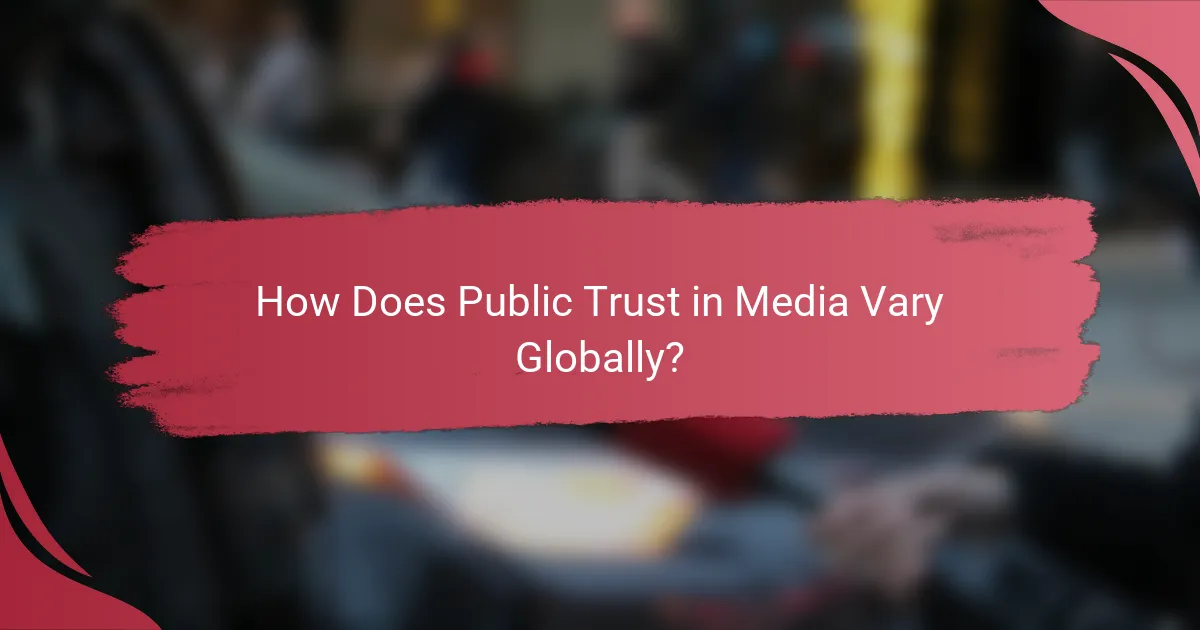
How Does Public Trust in Media Vary Globally?
Public trust in media varies significantly across different countries, influenced by cultural, political, and historical factors. In some regions, trust is high, while in others, skepticism prevails, often reflecting broader societal issues.
Trust levels in different countries
Trust levels in media can range from very high in countries like Finland and Norway, where public broadcasters are seen as reliable, to much lower levels in nations such as the United States and Brazil, where media is often viewed with suspicion. Surveys indicate that in some European countries, around 60-70% of the population expresses confidence in their media, while in the U.S., this figure can drop to the low 30s.
In Asia, trust varies widely; for instance, Japan tends to have higher trust levels compared to countries like India, where media is often criticized for bias and sensationalism. This disparity highlights the impact of local governance and media regulations on public perception.
Factors affecting media trust
Several factors influence public trust in media, including the perceived independence of news organizations, the quality of journalism, and the presence of government influence. Countries with strong press freedom laws typically report higher trust levels, as citizens feel their media can operate without censorship.
Additionally, the rise of misinformation and fake news has eroded trust in many regions. Audiences are increasingly discerning, often relying on social media and peer recommendations to validate news sources, which can complicate trust dynamics further.
Comparative analysis: USA vs. Europe
In the USA, media trust is often polarized, influenced by political affiliations and the prevalence of partisan news outlets. Many Americans express doubts about the objectivity of news, with trust levels fluctuating based on the political climate and major events.
In contrast, many European countries benefit from a more unified approach to public broadcasting, which is often funded by the government but operates independently. This model tends to foster a higher degree of trust, as citizens perceive these outlets as serving the public interest rather than political agendas.
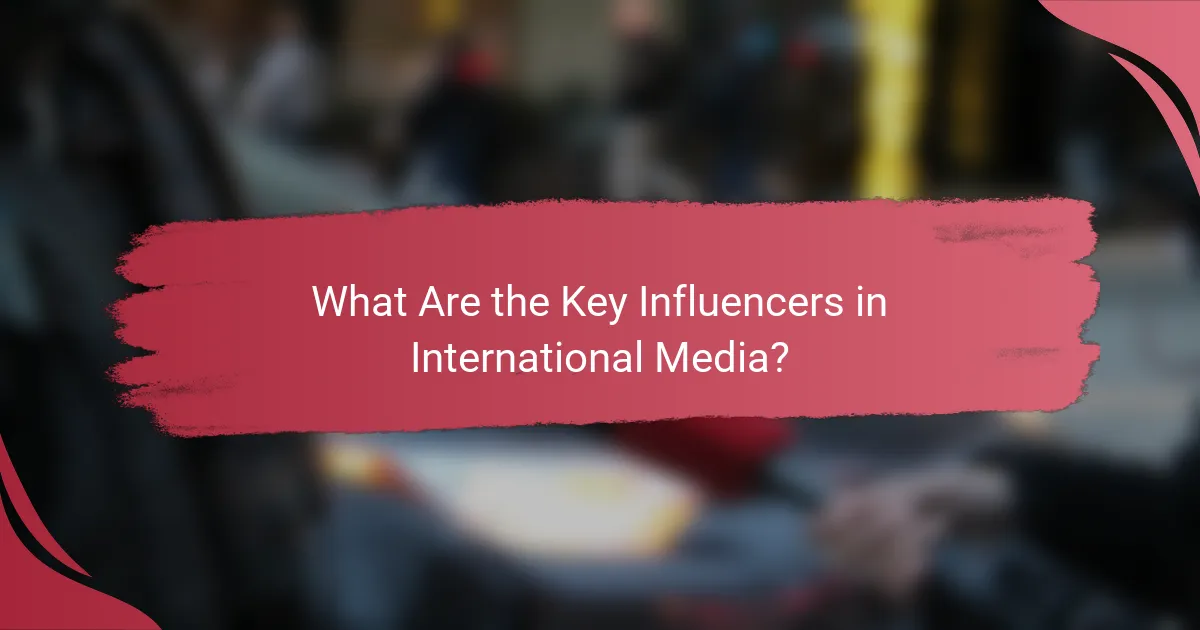
What Are the Key Influencers in International Media?
Key influencers in international media include major corporations, government regulations, and non-governmental organizations. These entities shape public perception, dictate content distribution, and influence the overall narrative in global media landscapes.
Major media corporations
Major media corporations play a significant role in shaping international media by controlling vast networks of information dissemination. Companies like CNN, BBC, and Al Jazeera not only provide news coverage but also influence public opinion through editorial choices and framing of stories.
These corporations often have substantial financial resources, allowing them to invest in high-quality journalism and extensive reporting. However, their ownership structures can lead to biases, as corporate interests may affect the objectivity of the content produced.
Government regulations
Government regulations are crucial in determining how media operates within different countries. Regulations can include content censorship, licensing requirements, and ownership restrictions, which can significantly impact the availability and diversity of media content.
For instance, countries like China impose strict controls over media to maintain state narratives, while others, such as those in the European Union, promote media pluralism and protect journalistic freedom. Understanding these regulations is essential for navigating the international media landscape.
Influence of non-governmental organizations
Non-governmental organizations (NGOs) exert influence on international media by advocating for press freedom, human rights, and ethical journalism. Organizations like Reporters Without Borders and the Committee to Protect Journalists work to highlight issues of censorship and support journalists facing persecution.
NGOs often provide resources, training, and funding to independent media outlets, helping to ensure diverse voices are heard. Their advocacy can lead to increased awareness of media issues and encourage reforms in government policies affecting the press.
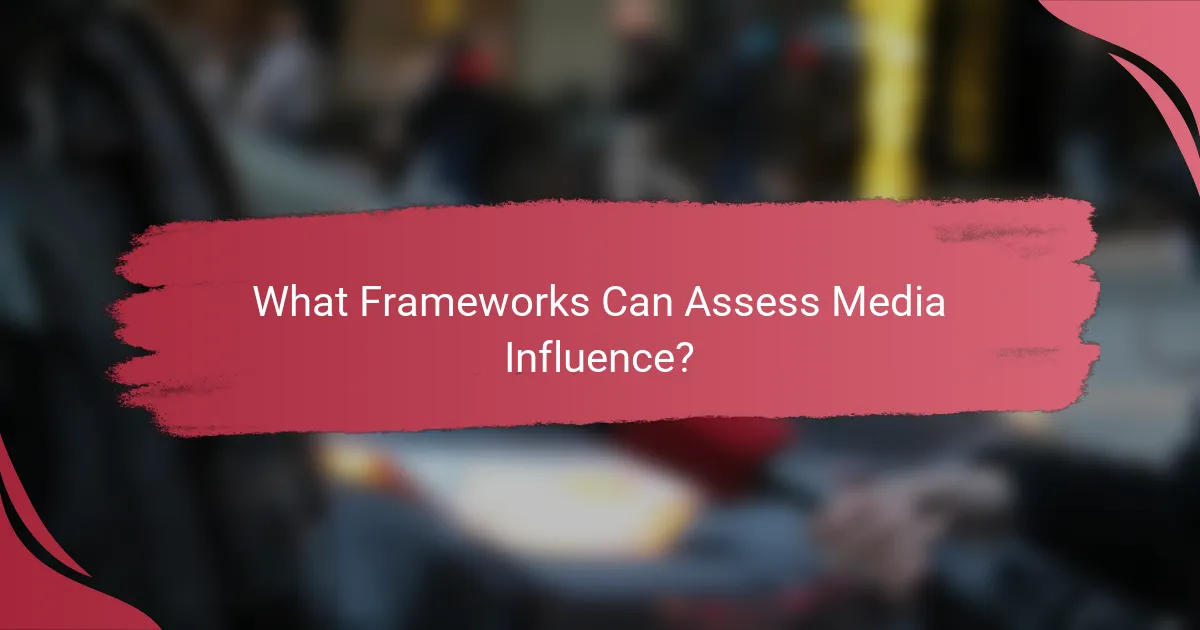
What Frameworks Can Assess Media Influence?
Frameworks for assessing media influence include various models and tools that evaluate how media shapes public perception and opinion. These frameworks help researchers and practitioners understand the dynamics of media impact on society.
Media influence models
Media influence models provide structured ways to analyze how media content affects audiences. Common models include the Hypodermic Needle Model, which suggests that media messages directly influence audience behavior, and the Two-Step Flow Model, which posits that media effects are mediated by opinion leaders who interpret and relay information to others.
When using these models, consider the context in which media operates, such as cultural factors and audience demographics. For instance, younger audiences may respond differently to social media campaigns compared to older generations who might prefer traditional news outlets.
Public opinion measurement tools
Public opinion measurement tools are essential for gauging the impact of media on societal views. Surveys, focus groups, and social media analytics are commonly used methods to collect data on public sentiment. These tools can reveal trends in how media narratives shape perceptions on key issues.
To effectively utilize these tools, ensure that your sample size is representative of the population you are studying. For example, online surveys can reach a broad audience quickly, but may not capture the views of those less active on digital platforms. Combining multiple measurement methods often yields the most comprehensive insights.
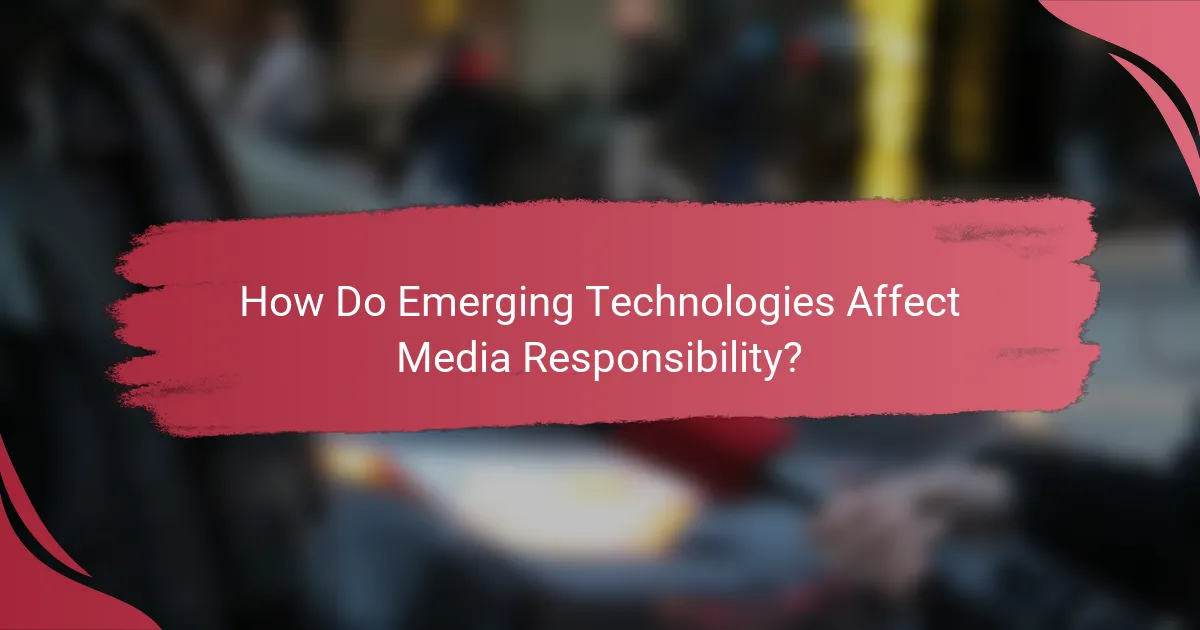
How Do Emerging Technologies Affect Media Responsibility?
Emerging technologies significantly impact media responsibility by altering how information is generated, disseminated, and consumed. These advancements, particularly in artificial intelligence and automation, raise questions about accuracy, bias, and ethical standards in journalism.
AI in news generation
AI plays a pivotal role in news generation by automating content creation and analysis. Tools like natural language processing can generate articles based on data inputs, allowing for rapid reporting on events, especially in finance and sports. However, this raises concerns about the quality and reliability of the information produced.
Media organizations must consider the implications of AI-generated content, including potential biases in algorithms and the need for human oversight. For instance, while AI can quickly summarize information, it may miss nuanced perspectives that a human journalist would capture.
To maintain media responsibility, organizations should implement guidelines for AI use, ensuring transparency about when content is AI-generated. Regular audits of AI systems can help identify and mitigate biases, fostering trust with audiences.
